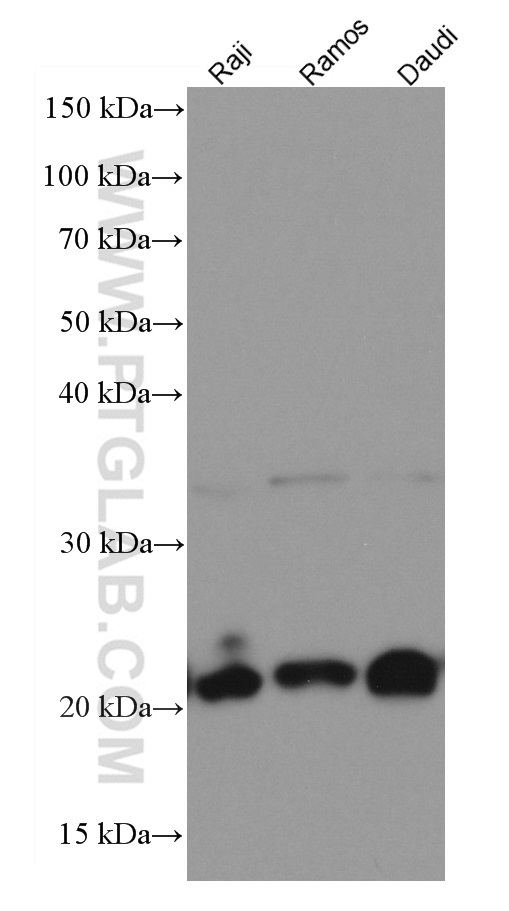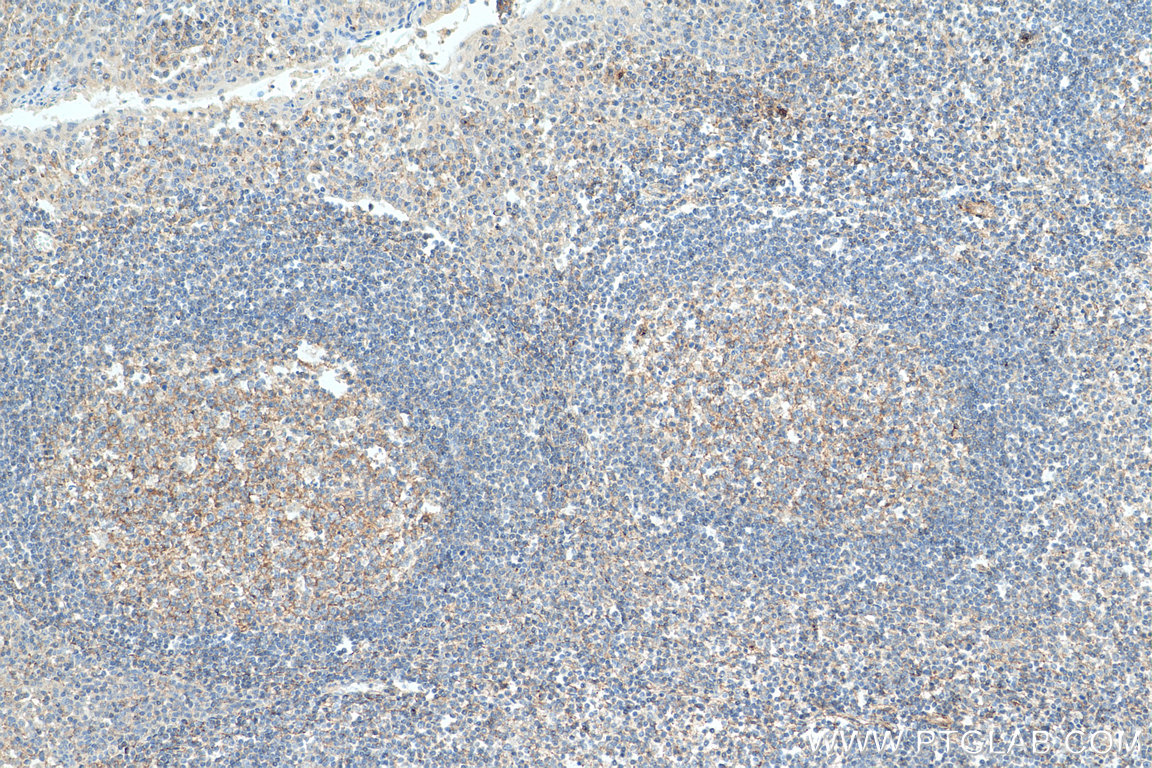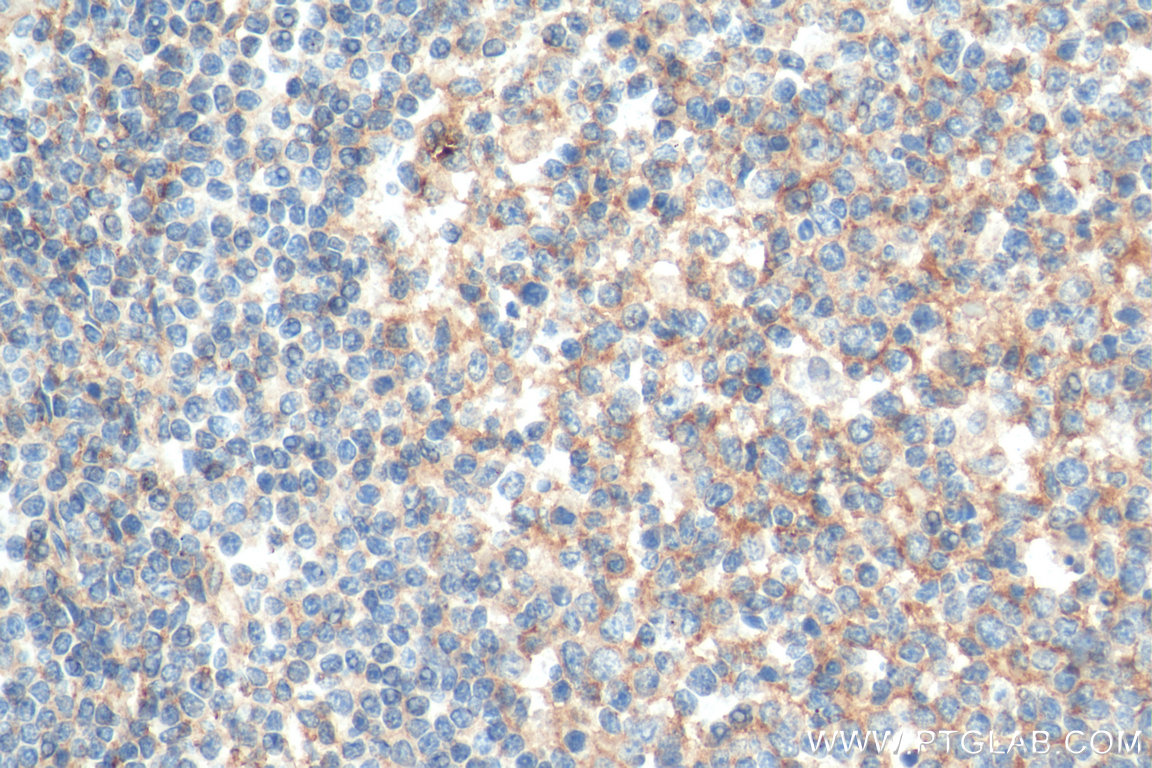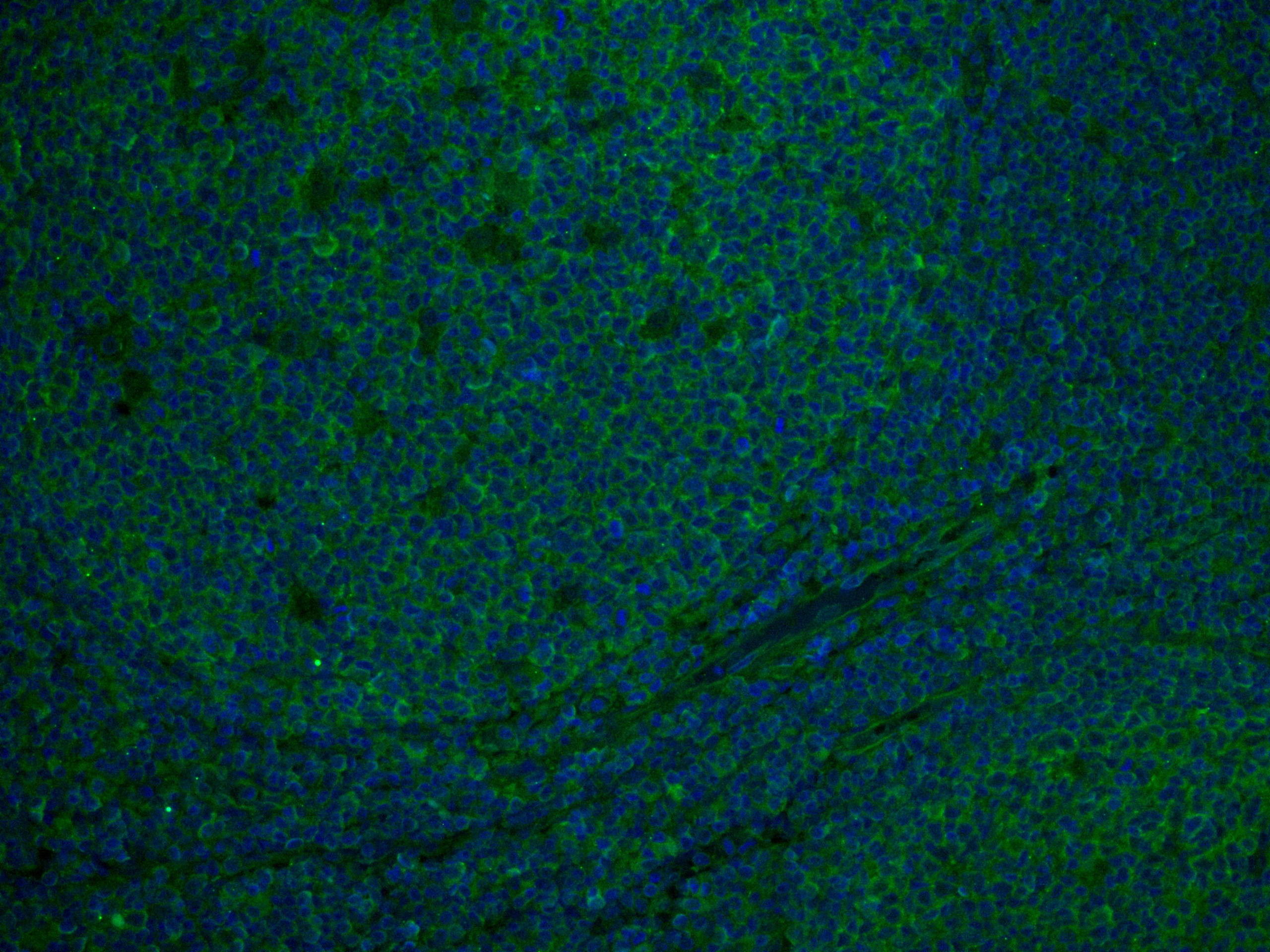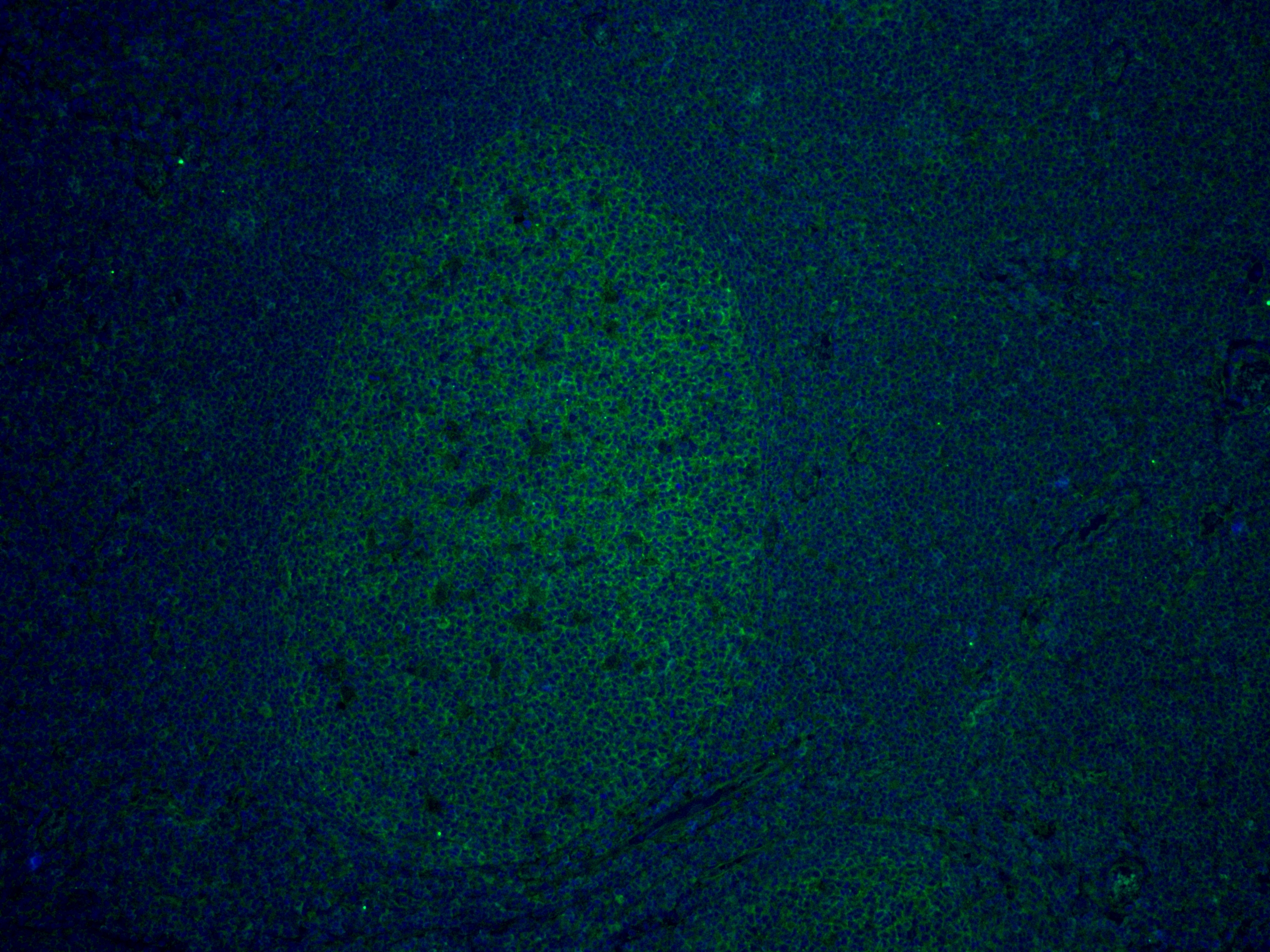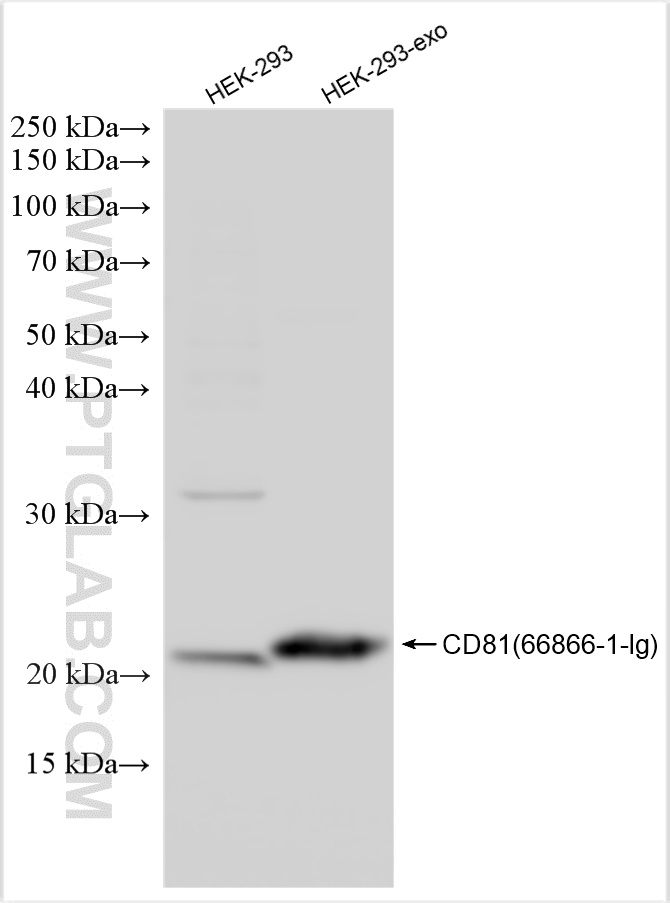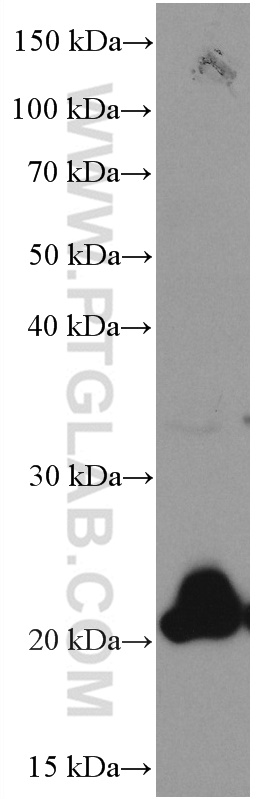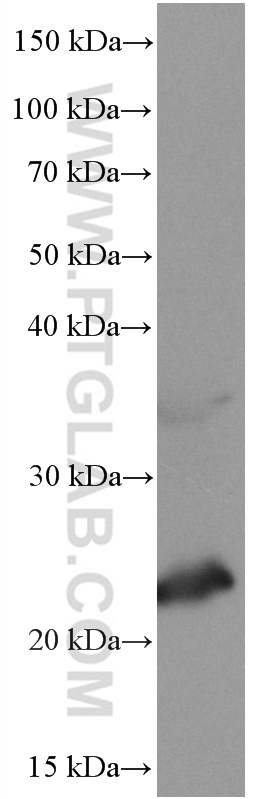验证数据展示
经过测试的应用
| Positive WB detected in | Raji cells, Jurkat cells, LPS treated THP-1 cells, Ramos cells, Daudi cells |
| Positive IHC detected in | human tonsillitis tissue Note: suggested antigen retrieval with TE buffer pH 9.0; (*) Alternatively, antigen retrieval may be performed with citrate buffer pH 6.0 |
| Positive IF-P detected in | human tonsillitis tissue |
推荐稀释比
| Application | Dilution |
|---|---|
| Western Blot (WB) | WB : 1:1000-1:6000 |
| Immunohistochemistry (IHC) | IHC : 1:500-1:2000 |
| Immunofluorescence (IF)-P | IF-P : 1:600-1:2400 |
| It is recommended that this reagent should be titrated in each testing system to obtain optimal results. | |
| Sample-dependent, Check data in validation data gallery. | |
产品信息
66866-1-Ig targets CD81 in WB, IHC, IF-P, ELISA applications and shows reactivity with human samples.
| Tested Applications | WB, IHC, IF-P, ELISA Application Description |
| Cited Applications | WB, IHC, IF |
| Tested Reactivity | human |
| Cited Reactivity | human, pig, rabbit, monkey |
| Immunogen | CD81 fusion protein Ag27298 种属同源性预测 |
| Host / Isotype | Mouse / IgG1 |
| Class | Monoclonal |
| Type | Antibody |
| Full Name | CD81 molecule |
| Synonyms | TAPA1, S5.7, CD81 molecule, CD81 antigen, 26 kDa cell surface protein TAPA-1 |
| Calculated Molecular Weight | 26 kDa |
| Observed Molecular Weight | 22 kDa |
| GenBank Accession Number | BC002978 |
| Gene Symbol | CD81 |
| Gene ID (NCBI) | 975 |
| ENSEMBL Gene ID | ENSG00000110651 |
| RRID | AB_2882203 |
| Conjugate | Unconjugated |
| Form | Liquid |
| Purification Method | Protein A purification |
| UNIPROT ID | P60033 |
| Storage Buffer | PBS with 0.02% sodium azide and 50% glycerol pH 7.3. |
| Storage Conditions | Store at -20°C. Stable for one year after shipment. Aliquoting is unnecessary for -20oC storage. |
背景介绍
CD81 (also known as TAPA1 or TSPAN28) is a membrane protein of the tetraspanin superfamily, which are characterized by the presence of four conserved transmembrane regions. Many of these members are expressed on leukocytes and have been implicated in signal transduction, cell-cell interactions, and cellular activation and development. CD81 is involved in signal transduction and cell adhesion in the immune system (PMID: 9597125). CD81 has also been identified as en essential receptor for HCV (hepatitis C virus) (PMID: 21428934).
实验方案
| Product Specific Protocols | |
|---|---|
| WB protocol for CD81 antibody 66866-1-Ig | Download protocol |
| IHC protocol for CD81 antibody 66866-1-Ig | Download protocol |
| IF protocol for CD81 antibody 66866-1-Ig | Download protocol |
| Standard Protocols | |
|---|---|
| Click here to view our Standard Protocols |
发表文章
| Species | Application | Title |
|---|---|---|
Gastroenterology PTEN deficiency facilitates exosome secretion and metastasis in cholangiocarcinoma by impairing TFEB-mediated lysosome biogenesis | ||
J Extracell Vesicles Extracellular vesicles from lung tissue drive bone marrow neutrophil recruitment in inflammation. | ||
Sci Adv Avian ANP32A incorporated in avian influenza A virions promotes interspecies transmission by priming early viral replication in mammals | ||
J Exp Clin Cancer Res Circular RNA circATP9A promotes non-small cell lung cancer progression by interacting with HuR and by promoting extracellular vesicles-mediated macrophage M2 polarization | ||
J Exp Clin Cancer Res Chemotherapy-elicited extracellular vesicle CXCL1 from dying cells promotes triple-negative breast cancer metastasis by activating TAM/PD-L1 signaling | ||
Drug Des Devel Ther Keloid Patient Plasma-Derived Exosomal hsa_circ_0020792 Promotes Normal Skin Fibroblasts Proliferation, Migration, and Fibrogenesis via Modulating miR-193a-5p and Activating TGF-β1/Smad2/3 Signaling |
